Time does not stand still, and thus change related to your IT landscape is inevitable. Day by day, hackers try to guess and estimate passwords of valuable accounts. Follow the best practice for credentials which is to change them after specific safety time intervals. Before changing them directly on your IT landscape resources, you need to add them to the platform. This operational order minimizes platform resource authentication failure. In the following step-by-step guide, we learn how to change the credentials password.
Changeable credentials parameters:
•username and password
•display name
•private key
•elevation state and its credentials
•grade of permission
Non-changeable credentials parameters:
•credential type (Windows, Unix, plaintext, key, ...)
The IT department has decided to change the password of credentials it deems insecure. According to newly established organization credentials policies, passwords require a length of at least 10 characters. The IT administration was given the task to pick a new password for the CONTOSO\Administrator Windows user account and communicate it back to management. Putting your randomizing gears into action, you have chosen the password: ThisIsASecureOne, consisting of 16 characters.
1.Navigate to the Configuration workspace and open the Credentials view per sidebar menu.
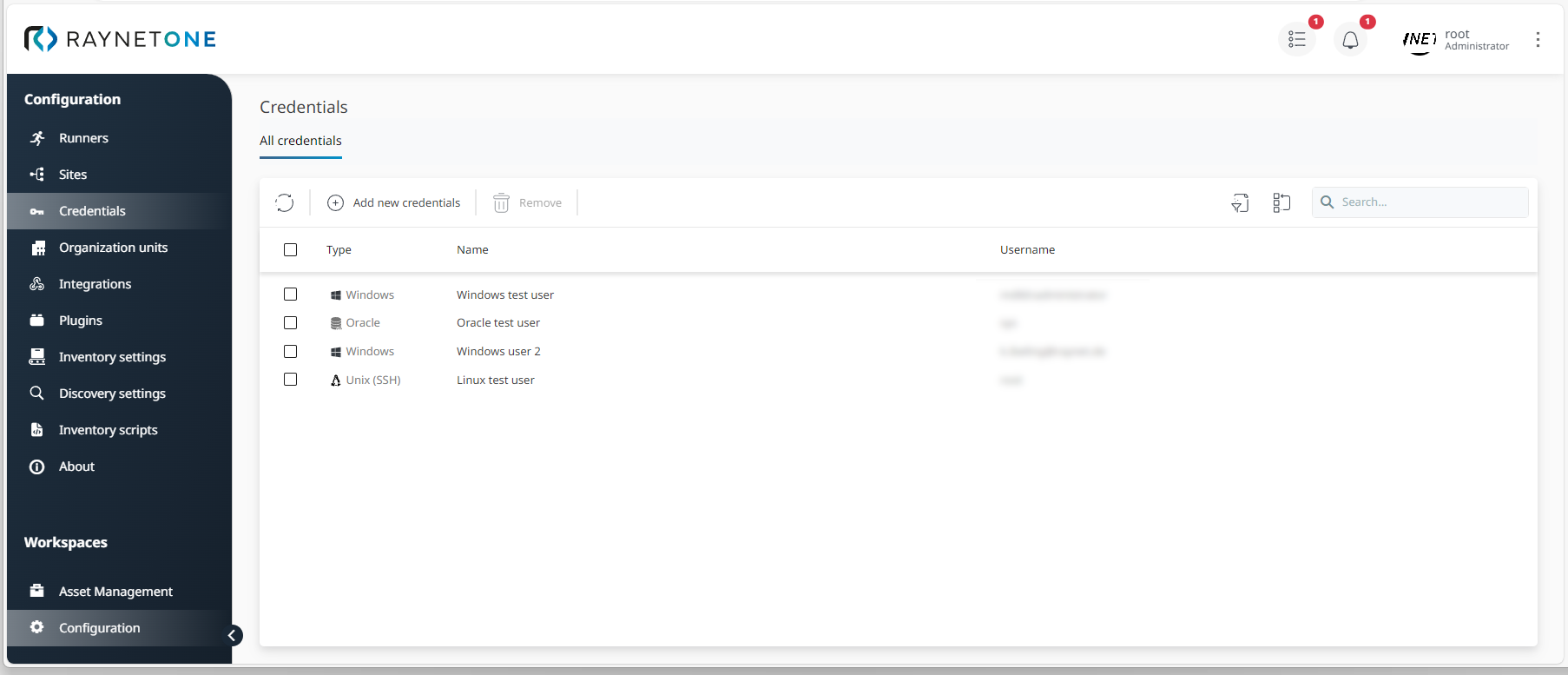
2.Locate the list entry named CONTOSO\Administrator and left-click on its name.

3.In the details view, click on the Edit button to open the Edit credentials input form sub-window.
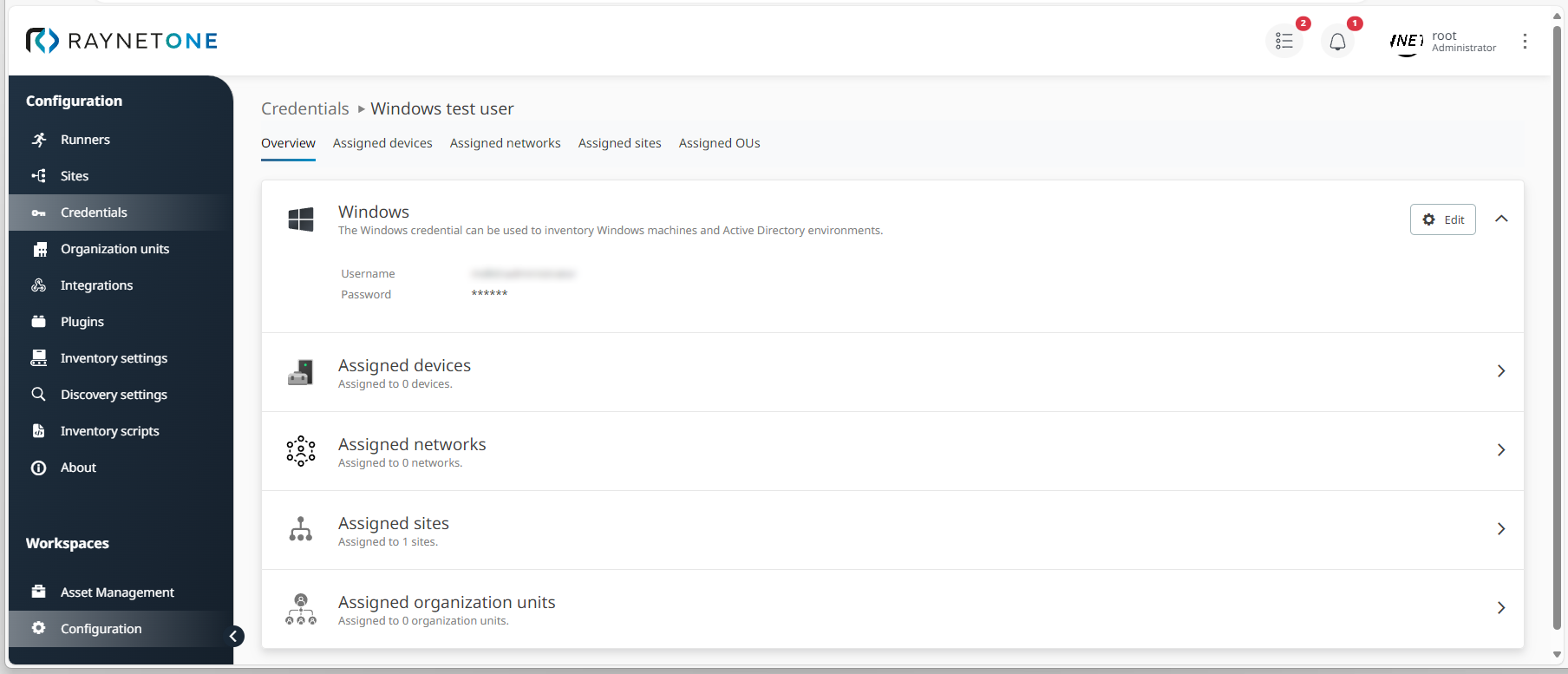
4.A sub-window titled Edit credentials is opened. It's specific to the credential type. In this case, we are editing Windows credentials. Thus, we are provided with input fields to change the display name, username or password. The amount and type of options varies depend on the type. Let's set the new password by putting in ThisIsASecureOne into both of the password input boxes. Click on Save to confirm the new password.
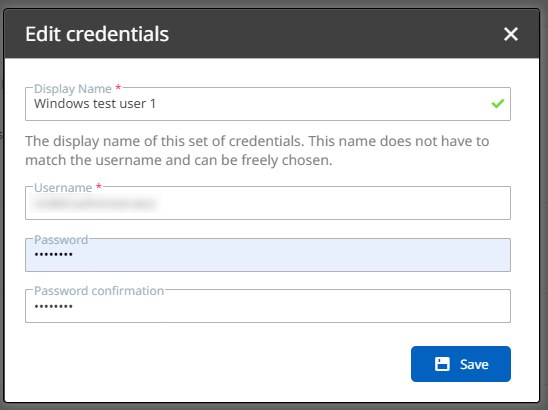
The changed credentials are now stored within the platform's user credential store.
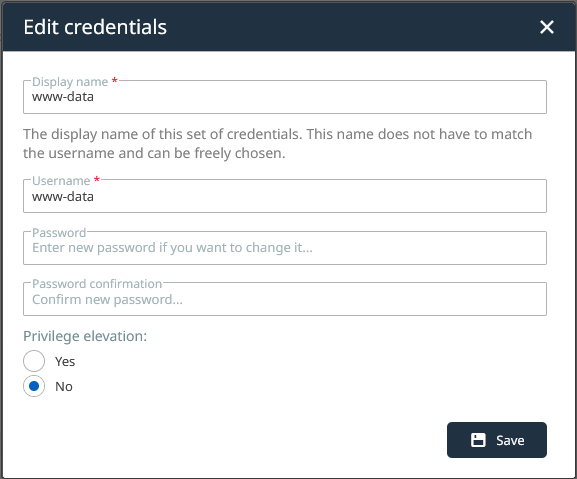
Edit credentials sub-window for the Unix plaintext credential type. It's a little bit more involved than the Windows one.
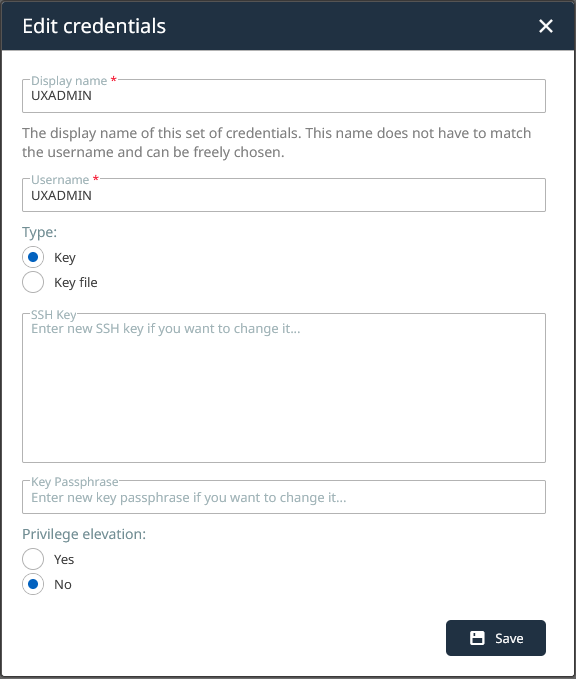
Edit credentials sub-window for the Unix key credentials type. By comparing the two Unix-targeted sub-window layouts, there can be multiple different layouts for a single platform type.
|
Note: |